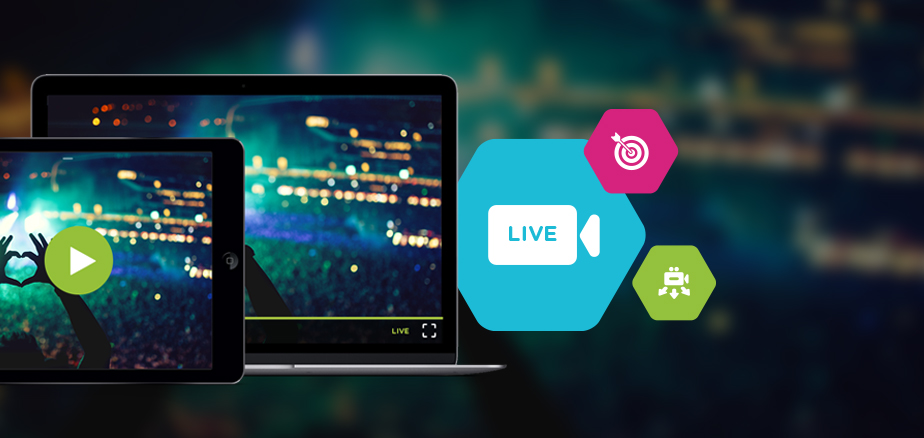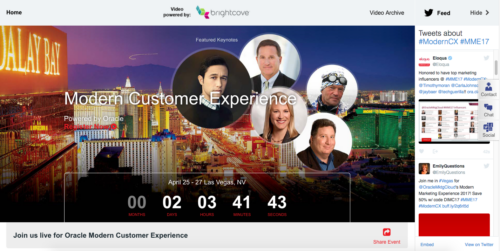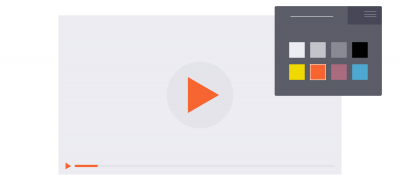Many marketers aspire to broadcast live events—and for good reason. Live video captures audiences’ attention by giving them the opportunity to be “first to know.” However, what was once a privilege is now seen as a right by your audience. Popular platforms like Periscope and Facebook Live have caused demand for live video to surge.
The future of communication is not just video, but live video. Companies must deliver high-quality, responsive video formats while building online destinations that foster audience loyalty. Fortunately, you don’t need to be a technical expert to achieve this. Live streaming can be straightforward and resource-efficient, with minimal risk. Sounds too good to be true? It’s not, and here’s why you should consider live streaming your next event.
BENEFITS OF LIVE STREAMING YOUR ROI-GENERATING EVENT
- Expand your brand’s audience: Live video grabs attention, boosting brand awareness, engagement, and conversions.
- Enhance your brand’s authenticity: Live video enables face-to-face communication in digital spaces, offering authentic, unedited interactions that build credibility.
- Maximize your video investment: Repurpose live video into short-form content or video-on-demand (VOD) to extend the value of your event for weeks, months, or years.
B2C and B2B brands are using live streaming to craft unique business models and digital experiences. With user-friendly video platform tools and repeatable workflows, live events are easy to stream and monetize—before, during, and after the event.
HOW TO MANAGE A LIVE EVENT VIDEO STREAM
1. BUILD ANTICIPATION WITH A PRE-EVENT PAGE
A pre-event page creates a destination for your live broadcast in advance, and allows you to promote your event early and regularly. So, at the time of the event, there’s no confusion about where to go. Even for the tech-savvy, setting up a web page on the day of the event and managing the live feed turnover can be taxing. Instead, create a space to interact with your audience before the event and streamline your event workflow. You’ve probably created a hashtag, now it’s time to liven up the conversation and animation around the event. Use this space to gather your audience’s views on social networks and observe in real time how your brand’s story is being told.
The final action before the event is to create templates of your live stream in a simple, repeatable process. A branded landing page on your domain, which includes features like conversation, social network sharing prompts and real-time hashtag control centralizes pre-event audience communications and quality assurance. In this way, you also avoid an empty, uninteresting video stream. By using a live event video template, you also spend less time and effort on it, so you can concentrate on coordinating a successful event. Synchronize with other members of your marketing team about pre-event promotions to brainstorm other creative ways to use the page.
For example, demand gen will want to know how to attract potential customers through this video site. Of course, provide something useful! You could simply offer to send an alert to your visitors when the next live broadcast takes place. If your schedule is confusing, you understand this added value. People are afraid of missing out, so a friendly reminder from a company is often a welcome communication, and a way to lead to more engagement.
2. ENSURE A QUALITY EXPERIENCE DURING THE EVENT
It’s time to move on to the event itself. Live streams can attract visitors who may not be able to physically attend the event. In the past, the audience had to be content with watching a video, a rather passive experience. Today, the modern content consumer wants to interact. Your audience expects to have an experience as pleasant as the live one.
- Furnish an optimal video experience: our attention span is short – infinitesimally small. As a result, visitors are unlikely to enjoy a poor-quality video experience. Make sure that the attention of interested parties doesn’t wane. Be sure to evaluate your live streaming environment to ensure that your live stream is responsive on mobile devices and delivers high-quality video. Broadcast your live event stream over the internet and on iOS and Android devices. Don’t be afraid to be bold about the size of your video: it hooks audiences, who stay focused on the live stream.
- “Broadcast to a second screen” your experience: what does this mean? Basically, put your social media team, or delegate in-house representatives, in charge of following the conversation and interacting with the audience. As the event is broadcast, the audience will naturally switch between widgets on social networks and the live event. You don’t slip away – you take an audience’s natural inclination for the second screen (or distracted nature) and use it as a way of bringing attention back to you. Visitors can continue to watch the video via a minilector, even if they’re busy on other features of the page broadcasting the live event. So keep adding video content that may be associated, advertising for partners or long-term resources, and even event calendar downloads. When they scroll down to see the rest of the content, the live stream will follow.
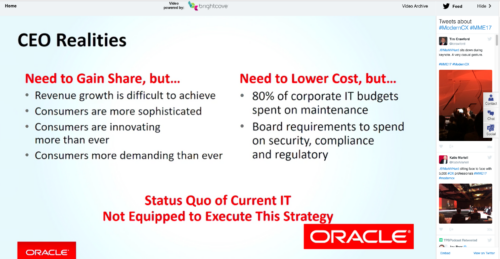
3. REPURPOSE AND PROMOTE POST-EVENT CONTENT
You’ve spent time organizing your event, promoting it and making sure it runs smoothly. Make sure your event continues to attract attention once it’s over. The best way to do this is with a post-event video landing page. This page allows you to add clips of the event’s highlights, and set features to engage new visitors who would have liked to attend, but weren’t able to.
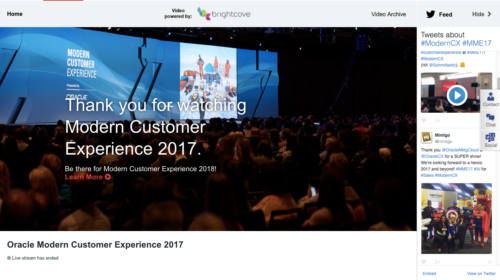
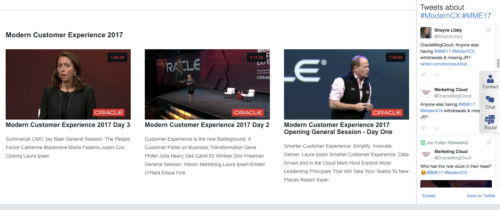
The marketing results of a live event are not limited to the number of visitors. With a live event video template, archiving event video is quick and easy. It’s done seamlessly, so the event is never really over, even once it’s finished. The live stream is on-demand, so it’s omnipresent and always relevant! Also consider creating clips of your video content on the most interesting or striking topics so that visitors can be drawn back in when they visit the site. As with any content, a video can and should be repurposed, when appropriate for your audience.
DESIGNING A CAMPAIGN AROUND VOD CONTENT
Everyone will want to get in on the action. Give your team access to video content and design a multi-channel plan around live video content. Where can you place your live video content?
- Landing pages: Live events or content series (think podcast or webcast) contribute to the success of your thought leadership efforts. Encourage visitors to register for your next event using previously recorded live content. Consider breaking your video content into chapters and placing them in a playlist. A lead form can be activated once the visitor has watched several videos and shows great interest.
- Blog: Transcribe your video content and create blog summaries. Use a tool like Storyify to add value to the story by integrating reactions on social networks. You can also use the same selection mentioned above, open, and integrate interactive elements that ask visitors to “choose their own adventure.”
- Emails: Your live event has been appreciated. Don’t lose the essential information shared by your speakers. Integrate these e-mail excerpts into pre-existing relationship-building campaigns, or create an entirely new campaign.
- Websites: Integrate your page into an event resource and video platform right up to the launch of the next event, be it annually, quarterly, or monthly. Potential attendees can learn so much through video. Use this platform to drive engagement, with email sign-ups for example. In addition, encourage attendees to interact after the event by soliciting user-generated content and placing it on your platform as well.
- Social networks: Social video is increasingly used and, when well targeted, can generate a more positive brand experience (organic or paid). Live video streams can be trimmed and then, using an online video platform with a social video distribution tool, you can trim them back into clip lengths optimized for Twitter, Facebook and YouTube. Multiple sets of video assets are created to be used in a variety of ways.
With accessible tools and consumer-friendly technology, live streaming is no longer limited to companies with large budgets. Marketers can create interactive live video experiences that meet both audience expectations and business goals. By using live event templates and optimized workflows, you can achieve high-quality results without needing an IT team.
In conclusion, live streaming offers endless possibilities for marketers. From pre-event promotion to post-event engagement, live video allows you to connect with audiences in real-time and create lasting impressions. Now is the time to plan your next live event and start reaping the benefits of live broadcasting.

